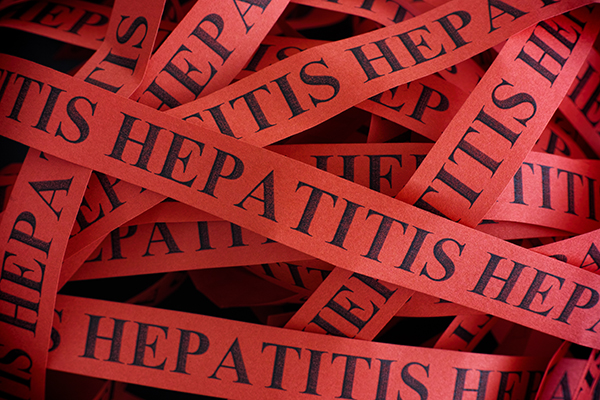Food Gloves & Latex Allergy Education
 Politicians joke about the endless stretch of rubber chicken dinners they may consume in an election year. For people with a latex allergy, such a prospect may be no laughing matter. While latex serves as an effective barrier glove material and has the best fit because of its elasticity, the risks associated should not be ignored. The solution is not simple and many options are available for operators today. It should always be mentioned that handwashing (before putting on gloves) is always the primary barrier to contamination and gloves are considered a good secondary barrier.
Politicians joke about the endless stretch of rubber chicken dinners they may consume in an election year. For people with a latex allergy, such a prospect may be no laughing matter. While latex serves as an effective barrier glove material and has the best fit because of its elasticity, the risks associated should not be ignored. The solution is not simple and many options are available for operators today. It should always be mentioned that handwashing (before putting on gloves) is always the primary barrier to contamination and gloves are considered a good secondary barrier.
What is latex and the allergy? Natural rubber latex (NRL) is derived from the sap of the rubber tree, and is found in a variety of 40,000+ common consumer products such as rubber bands, balloons, shoes, underwear, plus a large number of medical devices. Latex allergy is a reaction to certain proteins in latex rubber. The amount of latex exposure needed to product sensitization is unknown, but can develop over time. Mild reactions to latex involve skin redness, hives, or itching. More severe reactions may involve respiratory symptoms such as runny nose, sneezing itchy eyes, scratchy throat, and asthma, with the most severe being anaphylactic shock in highly sensitized persons. According to the National Institute for Occupational Safety & Health, about 1-6% of the general population and 8-12% of regularly exposed health care workers are allergic to latex in varying degrees. A small percentage of the highly sensitized people have reported reactions to food prepared with latex gloves.
Sufferers of NRL allergies are often people who are sensitized to other food allergies. They often have a cross reactive allergy to citrus fruits and nuts such as avocados, bananas, kiwi, chestnuts, almonds, bananas, tomatoes, potatoes, and papaya. People with spina bifida are also at increased risk for latex allergy. If you think you are allergic to latex, get an accurate diagnosis from your doctor.
Food Regulations–With the prevalent use of latex and following the first diagnosed reaction in 1979, latex allergy is now mentioned in the most recent FDA food regulation—the 2013 Food Code. There are caution statements, but no ban from FDA. A committee of experts has studied the issue with no recommendation to go as far as banning latex for food contact at this point. A few states have chosen in their regulations to allow only non-latex gloves for food handling including Arizona, Oregon, and Rhode Island. Six other states have a less stringent recommendation to not use latex gloves for food handling or post a notice that latex gloves are in use (WA, KS, MI, MA, WI, NY). See the full NBHC map >
What about the glove powder? Some latex gloves contain donning  powder (usually corn starch) which is a part of the manufacturing process. Powder also aides in slipping the glove on the hand. Latex proteins can bind to the powder granules and either remain on the skin when the glove is removed or release into the air when gloves are removed. It’s important to wash hands before and after the use of gloves to remove any powder from the skin to lessen the chance of sensitization. High quality, powder-free latex gloves have a drastically lower level of NRL protein and lessen the chance of sensitization over time. Some prominent hospitals have chosen to use quality powder-free latex gloves to create “latex-safe” environments.
powder (usually corn starch) which is a part of the manufacturing process. Powder also aides in slipping the glove on the hand. Latex proteins can bind to the powder granules and either remain on the skin when the glove is removed or release into the air when gloves are removed. It’s important to wash hands before and after the use of gloves to remove any powder from the skin to lessen the chance of sensitization. High quality, powder-free latex gloves have a drastically lower level of NRL protein and lessen the chance of sensitization over time. Some prominent hospitals have chosen to use quality powder-free latex gloves to create “latex-safe” environments.
Quality alternatives to latex —For those whom powder-free gloves are not enough, many non-latex alternatives are available. While no synthetic material is able to perfectly match latex in its exact fit and memory, many glove types will provide the dexterity for the food task. Higher quality vinyl or polyethylene gloves will handle most food handling tasks, with poly being the lowest cost. New synthetic alternatives have emerged, such as FoodHandler’s TekNique gloves, that look and feel like latex, have some elasticity, and are comparable in cost to vinyl or NRL. Nitrile gloves are also a synthetic option at a bit higher cost.
Food gloves are important tools in reducing the risk of foodborne illness transmission with proper use. Coupled with handwashing and utensils, gloves can provide an invaluable level of protection. Knowledgeable operators who understand the risks as well as the benefits of latex gloves, coupled with informed decisions concerning latex alternatives can prove to be effective in combating latex allergies.
Bottom Line: Those who suffer from the latex allergy must practice avoidance. FoodHandler advocates a two-pronged approach to addressing latex allergy in foodservice. (1) Managers must be educated about the potential risks to workers and consumers. (2) Provide high quality latex-free alternatives at those foodservice facilities choosing to eliminate the use of latex gloves. If you have more questions, contact FoodHandler
***
About the Author: Lacie Thrall











